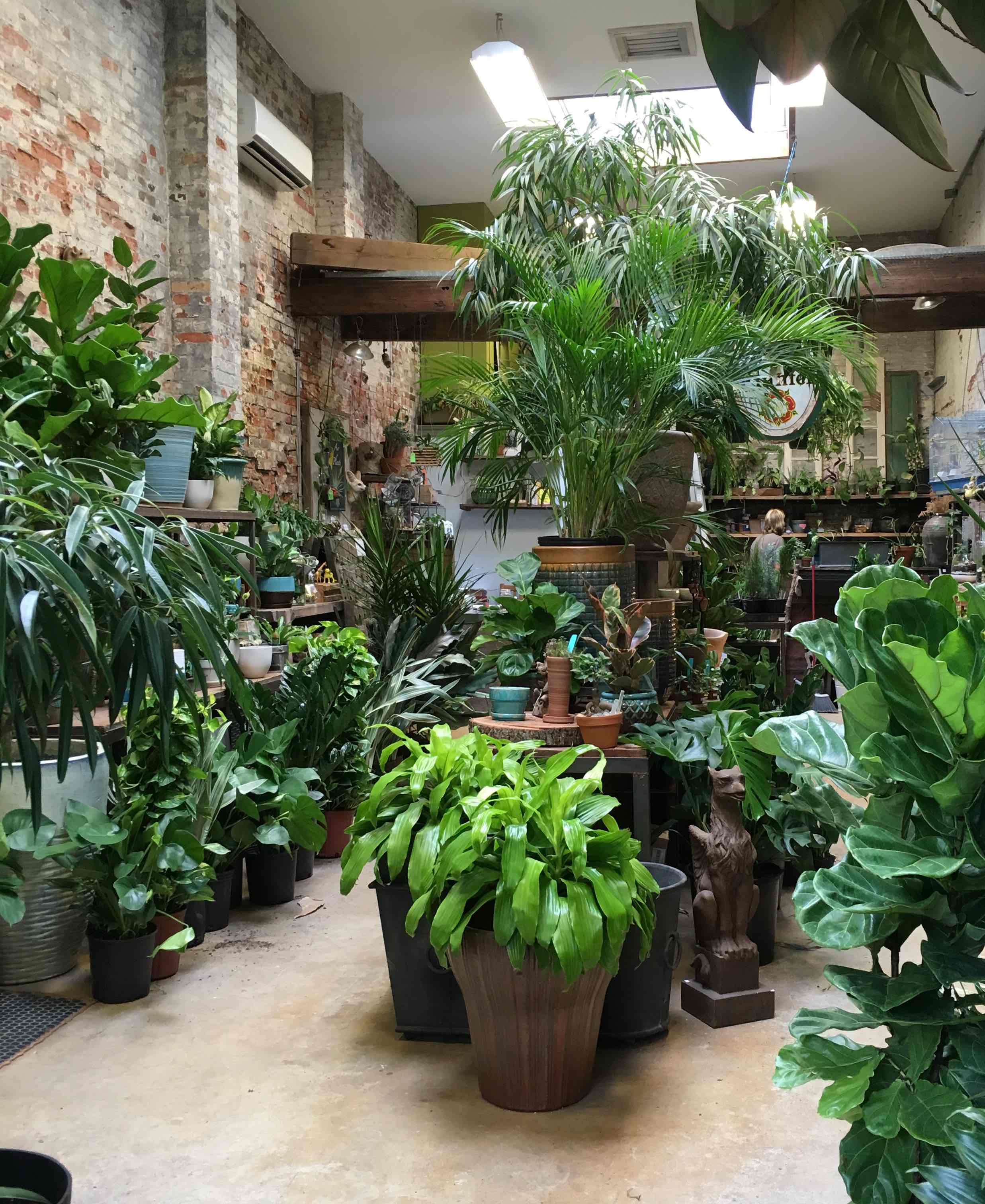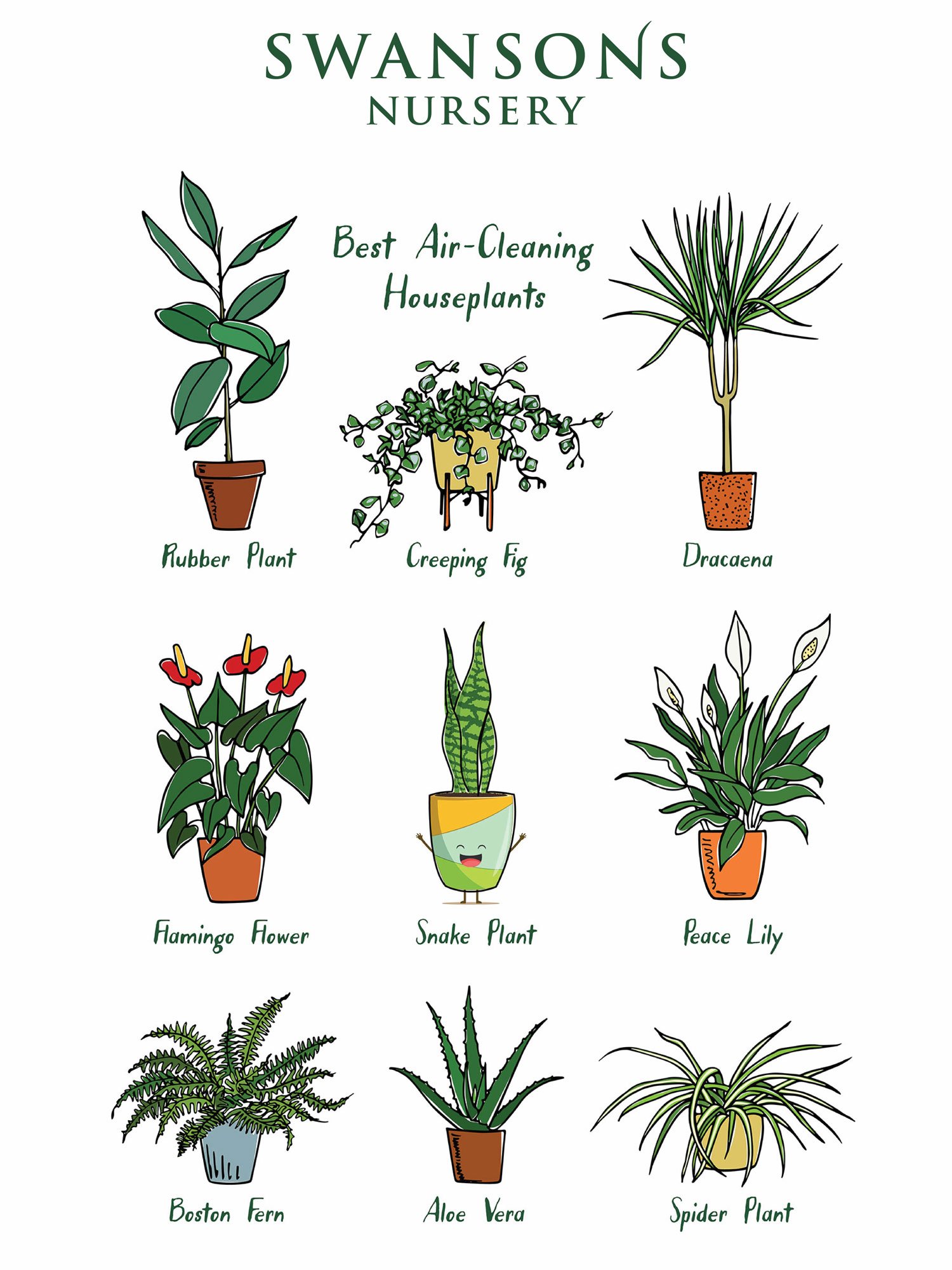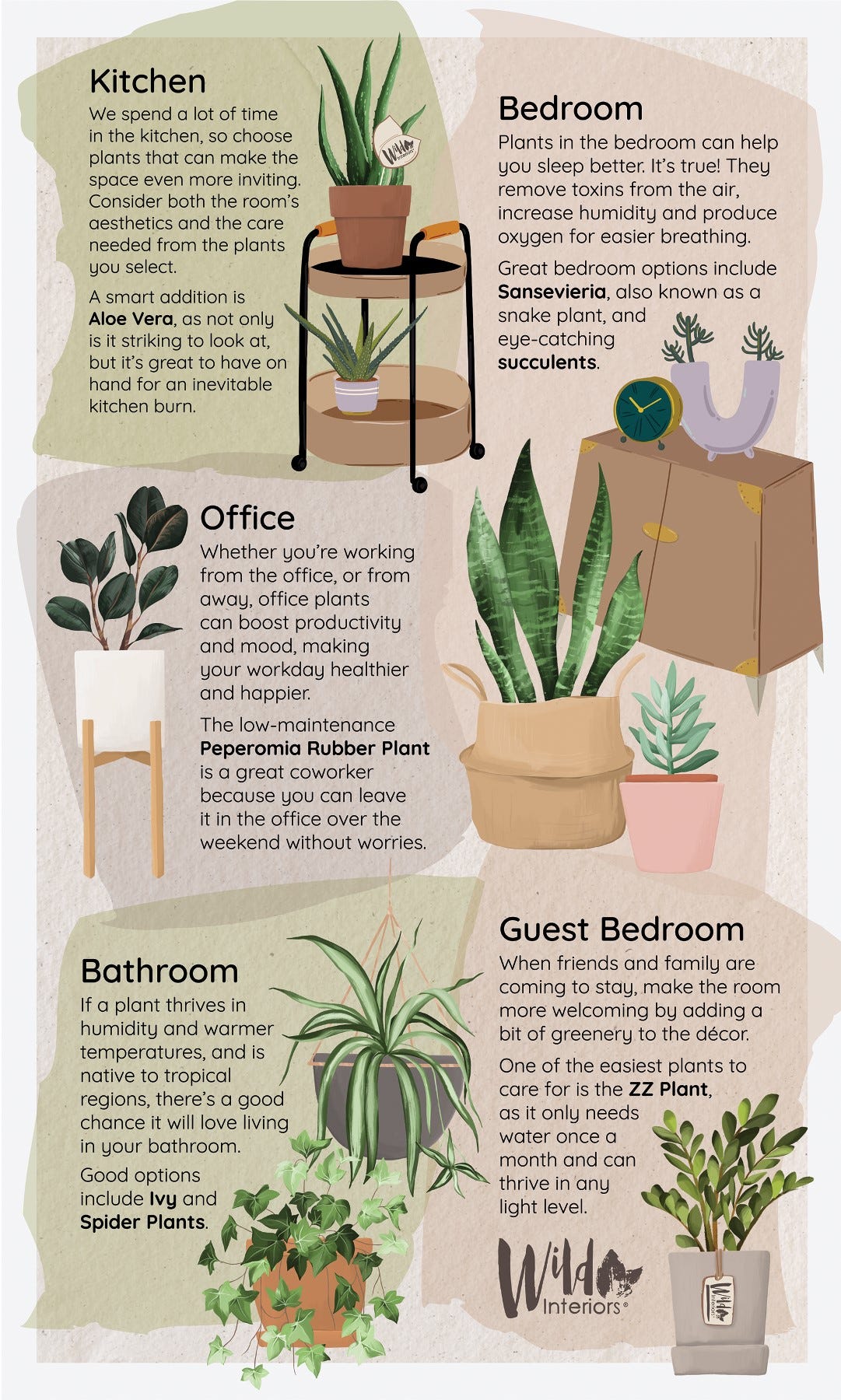Yes, it is good to have plants in your house. They improve air quality and create a calming environment.
Houseplants offer numerous benefits beyond their aesthetic appeal. They purify the air by removing toxins and releasing oxygen, making your indoor environment healthier. Plants also reduce stress and enhance mood, contributing to better mental health. Some species, like lavender and aloe vera, even have therapeutic properties.
Integrating plants into your home decor can boost creativity and productivity. They also add a touch of nature to indoor spaces, making your home feel more vibrant and inviting. Choosing the right plants for your space and caring for them properly ensures you reap all these benefits. Houseplants are a simple, cost-effective way to enhance both your living space and well-being.

Credit: cl.pinterest.com
Introduction To Houseplants
Houseplants bring life and color to any home. They purify the air and boost our mood. Many people love having plants in their living spaces. Let’s explore the world of houseplants.
Brief History
Houseplants have been around for centuries. Ancient Egyptians grew plants indoors for decoration. The Greeks and Romans also enjoyed indoor plants. During the Victorian era, houseplants became very popular. People filled their homes with ferns and palms. Today, the love for indoor plants continues to grow.
Current Trends
Many people now focus on sustainability. They prefer low-maintenance and eco-friendly plants. Succulents and cacti are very popular. These plants need little water and care. Air-purifying plants are also in demand. They help remove toxins from the air.
Another trend is creating indoor jungles. People love filling their homes with many plants. This creates a lush, green atmosphere. Hanging plants and vertical gardens are also trendy. They save space and add beauty to walls.
Using plants for mental health is a growing trend. Studies show that plants can reduce stress and anxiety. They create a sense of calm and well-being. Many people now use plants to create a peaceful home environment.
| Plant Type | Benefits |
|---|---|
| Succulents | Low maintenance |
| Ferns | Air purification |
| Cacti | Eco-friendly |
| Hanging Plants | Space-saving |
Health Benefits
Having plants in your house can greatly improve your health. These green friends do more than just beautify your space. They offer several health benefits that can enhance your quality of life.
Air Quality Improvement
Plants help in cleaning the air you breathe. They absorb carbon dioxide and release oxygen. This process can improve indoor air quality.
Many houseplants also remove toxins from the air. These toxins include benzene, formaldehyde, and ammonia. Here are some plants that are great for air quality:
- Spider Plant: Removes carbon monoxide and xylene.
- Snake Plant: Filters benzene and formaldehyde.
- Peace Lily: Absorbs mold spores and pollutants.
Improved air quality can reduce headaches and fatigue. It can also improve your breathing and sleep.
Mental Well-being
Plants can also boost your mental health. They help reduce stress and anxiety. Spending time around plants can make you feel calmer and happier.
Studies show that indoor plants can improve focus and concentration. This is especially helpful if you work or study from home. Here are some benefits of having plants for your mental well-being:
- Reduces stress levels.
- Enhances mood and creativity.
- Improves focus and productivity.
Taking care of plants can also be therapeutic. It gives you a sense of achievement and responsibility. You can feel more connected to nature, even indoors.
Aesthetic Appeal
Plants bring a unique charm to any indoor space. They enhance the visual appeal of your home.
Decorative Variety
Plants come in many shapes and sizes. Small succulents fit perfectly on a windowsill. Tall palms make a bold statement in a corner. With so many options, you can always find the right plant for any spot.
- Succulents: Tiny, perfect for desks or small tables.
- Palms: Tall, great for corners or large spaces.
- Ferns: Ideal for hanging baskets or bathrooms.
Color And Texture
Plants add vibrant colors to your home. Green is the most common color, but many plants have colorful leaves or flowers.
| Plant | Color | Texture |
|---|---|---|
| Spider Plant | Green with white stripes | Soft, flowing leaves |
| Snake Plant | Dark green with yellow edges | Stiff, upright leaves |
| Bromeliads | Red, pink, yellow flowers | Waxy, thick leaves |
Textured leaves add a tactile element to your decor. Soft, flowing leaves create a relaxed vibe. Stiff, upright leaves offer a more structured look. This mix of colors and textures keeps your home interesting.
Choosing The Right Plants
Having plants in your house can bring many benefits. They purify the air, boost your mood, and even improve your focus. But it’s important to choose the right plants for your home. Different plants have different needs. Some are easy to care for, while others need a lot of attention. Here are some tips to help you choose the best plants for your home.
Low Maintenance Options
If you have a busy schedule, low maintenance plants are a great choice. These plants are easy to care for and don’t need much attention. Here are some popular low maintenance plants:
- Snake Plant: Needs little water and low light.
- ZZ Plant: Tolerates low light and infrequent watering.
- Spider Plant: Grows well in indirect light and needs watering once a week.
- Aloe Vera: Prefers bright light and minimal watering.
Pet-friendly Choices
If you have pets, it’s crucial to choose pet-friendly plants. Some plants can be toxic to cats and dogs. Here are some safe options:
- Areca Palm: Safe for pets and thrives in indirect light.
- Boston Fern: Non-toxic and enjoys humidity.
- Calathea: Pet-safe and grows well in low to medium light.
- Money Tree: Safe for pets and prefers bright, indirect light.
Placement Tips
Placing plants inside your house can brighten up any space. To ensure your plants thrive, you need to consider their placement. Below are some helpful tips to keep your indoor plants healthy and happy.
Lighting Needs
Understanding the lighting needs of your plants is crucial. Some plants love bright, direct sunlight, while others prefer indirect light. For instance, succulents and cacti thrive in bright sunlight.
In contrast, ferns and peace lilies do well in low light. Use a table to organize which plants suit different lighting conditions:
| Plant Type | Lighting Conditions |
|---|---|
| Succulents | Bright, Direct Sunlight |
| Ferns | Low Light |
| Peace Lilies | Indirect Light |
Space Considerations
Think about the space considerations for your plants. Some plants grow tall, while others spread out. Make sure the plant has enough room to grow.
Here are a few tips:
- Place tall plants in corners.
- Use shelves for small plants.
- Hang trailing plants in baskets.
Ensure there is enough space for air circulation around each plant. This helps them stay healthy and prevents mold growth.

Credit: www.phillymag.com
Care And Maintenance
Having plants in your house brings many benefits. To enjoy these benefits, proper care and maintenance are essential. This guide will help you keep your indoor plants healthy and vibrant.
Watering Guidelines
Watering is crucial for plant health. Too much or too little water can harm plants. Here are some guidelines:
- Check Soil Moisture: Insert your finger into the soil. If it feels dry, it’s time to water.
- Watering Schedule: Most plants need water once a week. Adjust based on the plant type and season.
- Drainage: Ensure pots have drainage holes to prevent waterlogging.
- Water Quality: Use room temperature water. Avoid using cold water directly from the tap.
Soil And Fertilization
Soil quality and fertilization play a vital role in plant health. Good soil provides essential nutrients and supports root growth.
| Soil Type | Description | Best For |
|---|---|---|
| Potting Mix | Light and well-draining | Most houseplants |
| Cactus Soil | Fast-draining with sand | Cacti and succulents |
| Orchid Mix | Chunky with bark | Orchids |
Fertilization helps plants grow by providing extra nutrients. Follow these tips:
- Choose the Right Fertilizer: Use a balanced, water-soluble fertilizer for most plants.
- Frequency: Fertilize once a month during the growing season (spring and summer).
- Application: Dilute the fertilizer according to the package instructions.
By following these care and maintenance tips, your indoor plants will thrive and bring beauty to your home.
Common Issues And Solutions
Having plants in your house brings nature indoors. But, plants also come with challenges. Here, we discuss common issues and solutions for indoor plants.
Pest Control
Pests can harm your indoor plants. Common pests include spider mites, aphids, and whiteflies. These pests can damage leaves and stunt growth.
- Spider Mites: Use a spray bottle with water and dish soap. Spray on the leaves.
- Aphids: Introduce ladybugs or use neem oil spray.
- Whiteflies: Use yellow sticky traps to catch them.
Inspect plants regularly for pests. Quarantine new plants to avoid spreading pests.
Disease Prevention
Plant diseases can be a problem. Fungal and bacterial infections are common. These diseases can kill your plants.
| Disease | Solution |
|---|---|
| Fungal Infections | Use a fungicide and improve air circulation. |
| Bacterial Infections | Remove infected leaves and avoid overwatering. |
Keep leaves dry to prevent diseases. Ensure your plants have good air circulation.
Having plants indoors can be rewarding. With these tips, you can manage common issues and enjoy healthy plants.
Diy Plant Projects
Adding plants to your home can be fun and rewarding. DIY plant projects are an excellent way to get creative while improving indoor air quality. Let’s explore some exciting DIY plant projects you can try.
Terrariums
Terrariums are mini gardens in glass containers. They are perfect for small spaces. You can use jars, vases, or fish tanks. Start by placing small rocks at the bottom for drainage. Next, add a layer of charcoal to keep the air fresh. Then, add soil and plant your favorite small plants like succulents or ferns.
Water lightly and place the terrarium in indirect sunlight. Terrariums are low-maintenance and can be a beautiful centerpiece.
Vertical Gardens
Vertical gardens are great for saving space. They are also known as living walls. You can use a wooden pallet, hanging planters, or shelves. Choose plants that grow well vertically, like ivy or ferns.
Secure your chosen structure to the wall. Arrange your plants in the containers or slots. Water the plants regularly and ensure they get enough light. Vertical gardens can turn a plain wall into a vibrant green space.
| DIY Project | Materials Needed | Ideal Plants |
|---|---|---|
| Terrariums | Glass container, rocks, charcoal, soil | Succulents, ferns |
| Vertical Gardens | Wooden pallet, hanging planters, shelves | Ivy, ferns |
- Terrariums are great for small spaces.
- Vertical gardens save space and look amazing.

Credit: www.swansonsnursery.com
Frequently Asked Questions
Is It Healthy To Have Plants Inside The House?
Yes, having plants inside the house is healthy. They improve air quality, reduce stress, and boost mood.
What Are The Disadvantages Of Indoor Plants?
Indoor plants can attract pests, require regular maintenance, and sometimes trigger allergies. They may also need specific light and humidity conditions to thrive.
Which Indoor Plant Purifies The Air The Most?
The Spider Plant purifies indoor air effectively. It removes formaldehyde, xylene, and benzene, promoting a healthier environment.
Are Plants Good For The Air In Your Home?
Yes, plants improve indoor air quality. They absorb pollutants and release oxygen. Common indoor plants like spider plants and peace lilies are effective.
Conclusion
Having plants in your house can improve air quality and boost mental well-being. They create a calming atmosphere. Houseplants also add beauty to your living space. Caring for plants can reduce stress and enhance your mood. Embrace the benefits of indoor plants and enjoy a healthier, happier home environment.

My mission is to help you bring the beauty of nature indoors with expert advice, detailed plant care guides, and creative design ideas.





Leave a Reply